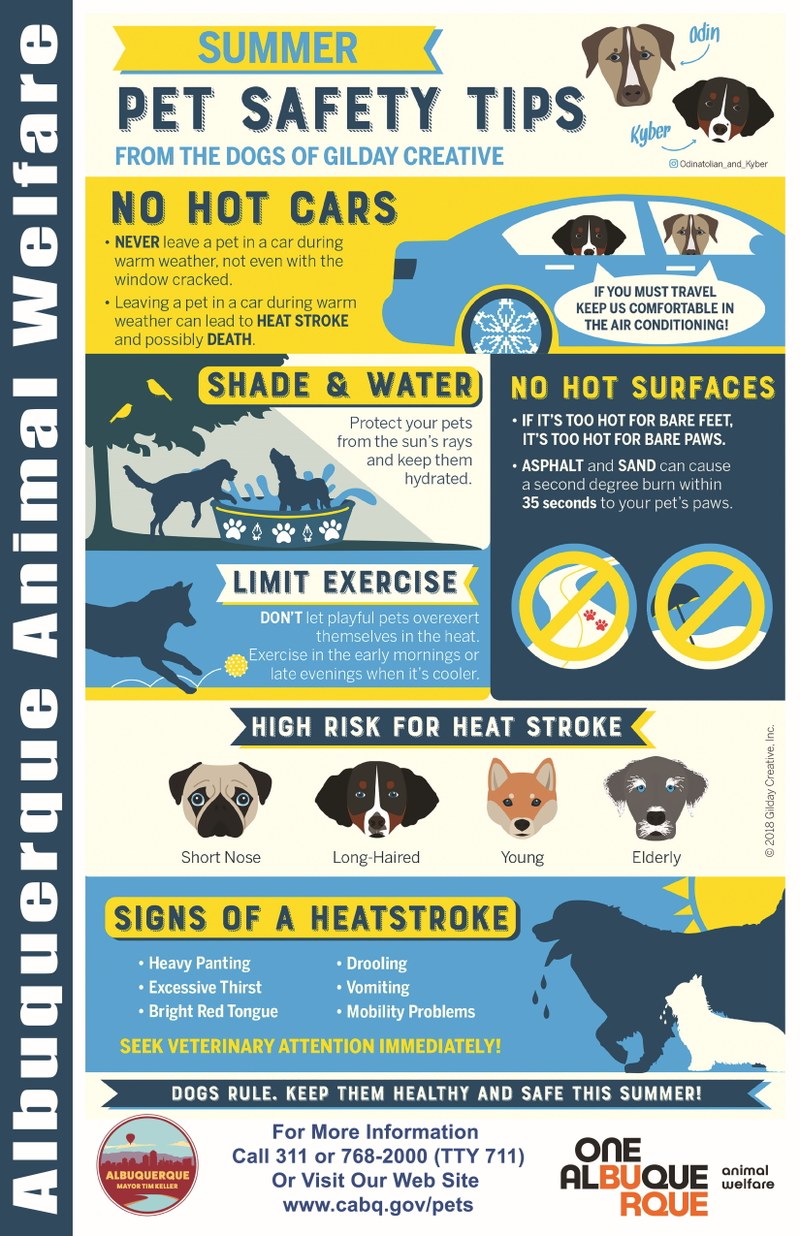
Keep Pets Safe When Temperatures Rise
Take steps to protect your animals
ALBUQUERQUE — Albuquerque Animal Welfare Department (AWD) reminds pet owners to be extra careful during prolonged exposure to heat. High temperatures hitting or topping 100 degrees can pose a danger to pets.
“Remember your pets are relying on you to keep them safe,” said Animal Welfare Department Captain David Rose. “If it’s too hot for you, it’s too hot for them.” Also keep in mind:
- Never leave pets in a parked car. On warm days, temperatures inside a vehicle can rise rapidly to dangerous levels. For example, on an 85-degree day the temperature inside a car – even with the windows cracked – can reach 102 degrees within 10 minutes. After 30 minutes, the temperature will reach 120 degrees.
- Shade and water are a must. Any time your pet is outside, make sure they have protection from heat and sun (a doghouse alone does not provide relief from heat) and plenty of fresh, cool water. Heatstroke can be fatal for pets.
- Avoid walking on asphalt. It gets very hot and can burn paws.
- Limit activity on hot days. Adjust the intensity and duration of pet exercise in accordance with the temperature. On very hot days, limit to early morning or evening hours.
- Prevent sunburn. Use animal-safe sunscreen on exposed parts of your pet's skin such as the tips of their ears, nose and belly. This is especially important for dogs with short or light-colored fur, which can easily burn. If you're not sure what product to use, please ask your vet.
- Recognize the signs of heatstroke. Symptoms include heavy panting, glazed eyes, rapid heartbeat, restlessness, excessive thirst, lethargy, fever, dizziness, lack of coordination, profuse salivation, vomiting, a deep red or purple tongue, and unconsciousness.
If your pet shows heatstroke symptoms, take steps immediately to gradually lower their body temperature and contact your veterinarian as soon as possible:
- Move your pet into the shade or an air-conditioned area.
- Apply ice packs or cold towels to your pet’s head, neck and chest or run cool (not cold) water over them.
- Let your pet drink small amounts of cool water or lick ice cubes.
- Take your pet directly to a veterinarian.
“By taking simple preventive steps and staying alert to warning signs, we can keep pets safe and healthy throughout the hottest months of the year,” said Mayor Tim Keller. “Our animals count on us; let’s be there for them.”
